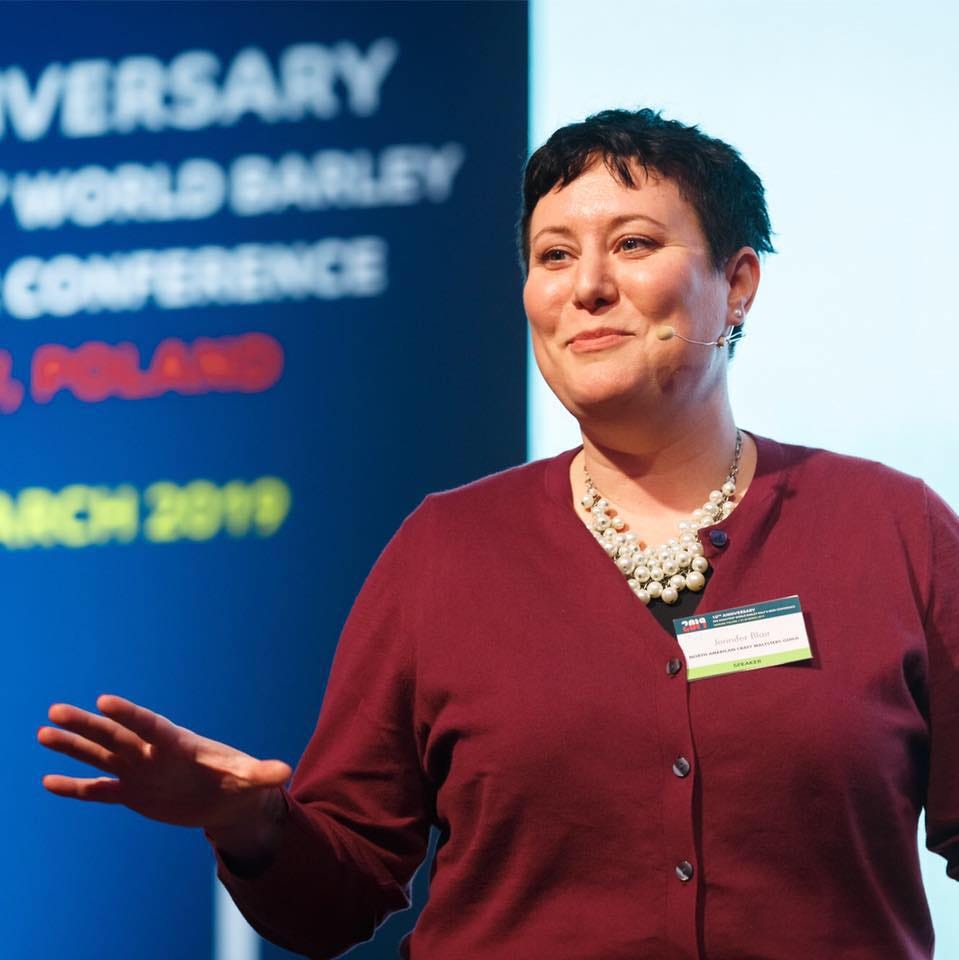During the height of the pandemic in 2020, I was watching a virtual homebrewing seminar by a well-respected homebrewer. He began his seminar by discussing issues with oral histories of beer styles and how many stories have been debunked by researchers and historians scouring brewing logs and other records. He likened rural brewing practices, such as farmhouse brewing, to “fairy tales” and talked at length about the romanticization of styles such as Saison.
I get the argument, I really do. One thing to know about me is that I fucking love rules. I love frameworks, I love structure, I love predictability. I’ve talked and written about my struggles with institutionalized beer style guidelines - I love having something that accretes a lot of information into something digestible. Still, I hate that the power of decision seems to rest in the hands of a tiny, very homogenous group. I love a paper trail. I want things recorded. I want to be able to reference them and show my work. That’s easily done when the information is written down. It’s not as easily done when my source of information is a conversation.
However, we quickly run into problems when we consider the who. Whose version is recorded? Historically, who was allowed to learn to read and write? Who was allowed to work in roles outside the home? Of those roles, what roles were given deference, and what roles were deemed ignoble?
Epistemic injustice is “a form of systemic discrimination relating to the creation of knowledge.” Epistemic injustice happens when members of historically excluded groups are denied capacity as creators of knowledge; further, they are “diminished or excluded from the process of creating meaning.”1 Epistemic injustice considers certain forms of knowledge superior to other forms. Not recognizing or valuing oral history is a form of epistemic injustice.
The Echo Chamber of Sainted White Men
And yet, we still worship at the altar of the handful of Sainted White Men in the brewing industry, conferring titles of “Pope” and “Godfather” onto them. I recall reading one popular brewing book and seeing a reference to a specific brewing technique. Wanting to learn more about the technique, I checked the references and found the citation I needed. I then went to the new reference and saw basically the same language about the technique but no additional information. So I checked that reference’s references and …the reference cited was the initial source. ))<>((
Epistemic injustice shows up in a lot of ways in the beer industry, especially in publishing and conferences. A quick perusal of the Brewers Publications website, a subsidiary of the Brewers Association, shows about 50 authors. Out of those 50 authors, 49 of them are white-presenting and 44 of them are men. I’m not going to spend my time trying to figure out what the representation of authors for industry publications such as The New Brewer and Technical Quarterly because I would be shocked - SHOCKED, I tell you! - to find those numbers all that different.
If you’ve seen me present, then you may remember that I end all of my presentations with a slide of recommended resources, usually including a comprehensive list of my references. I do that in part because of the above experience. I had a huge shift in perspective because I realized that so many of the Sainted White Men just quote each other back and forth and have the luxury of rarely - if ever - having their credibility challenged.

For a long time, I was intimidated by presenting certain beer topics because I felt they had already been covered. And they had. And that’s okay. Because what I learned is that, while the information may not change, the delivery did. I found that there were people out there for whom my presentation style resonated. Some people like and respond well to the way I present information and the examples I use.2 Some of this is societal - men’s language tends to be competitive, while women’s speech styles are cooperative. One of the core tenets of my presentation style is thinking about my audience and what they want to know rather than talking at my audience about what I know with no regard to whether it is relevant or interesting.
I also include my resources because not all of the knowledge the Sainted White Men have is based on their actual experiences. I can label a diagram of a barley kernel even though I’ve never been a barley grower or researcher. But I find that oftentimes there is an unchecked belief that this knowledge is somehow inherent. This unchecked belief can be attributed to what’s known as the status quo bias. The status quo bias is a cognitive bias that reflects a desire to keep things as they are and to resist change. Adherence to the status quo bias leads to stagnation and failure to innovate.
Hmmmm, it sounds like enforcing status quo bias can do things like cause an industry to contract and see its customers bail.
Not only can you learn this knowledge, but you can speak about those topics and educate others about those topics. With authority. Women, consciously or unconsciously, can buy into notions that there are certain jobs, professions, or careers wherein a certain innate brilliance is required and that, as women, they are unlikely to have that gift.
In case you need to hear it directly, you are allowed to create knowledge and derive meaning from your experiences with that knowledge. Topics such as foam, IPA, hops, and water do not solely belong to the men who have written books about them. It may feel as if there is nothing left to say about some topics, but I assure you there is. Especially if you are used to being the “only” in a beer environment.

There is value in considering the same topics from different cultural perspectives. There is also value in seeing your lived experiences reflected in the information you receive rather than having a roomful of homogeneity decide what you should be interested in.
And speaking about topics in which you are interested is not any less valuable if you use vehicles such as social media to connect with your audience. For one, platforms such as social media have much lower barriers to entry than bromidic institutions like industry conferences, with much less interference from those who reflexively defend the status quo.
Additionally - and most of you already know this - be wary of anyone who is only interested in hearing the trauma and struggle associated with your lived experience. That’s what is known as epistemic exploitation, which is a topic for another newsletter.
Positional Bias
Recently, someone posed a question in an online group about whether a beer’s position in a competition flight affects its evaluation. The answer is that yes, a beer’s position in a flight will affect the score it receives, particularly if it is the first sample.
First sample bias, as it’s known, is a type of positional bias. Tasters tend to assess the first sample of a flight more favorably than the remaining samples in the group. The more experienced of a taster you are, the less likely you are to engage in first sample bias. There is also a bias concept known as the error of central tendency, wherein samples in the center of a flight are preferred over samples at the end of a flight.
There are several reasons for these biases, such as one’s mood shifting from excitement and anticipation with the first sample to indifference or impatience by the end of the flight. Maybe those last few samples are the only thing standing between you and lunch or the end of your judging day. Maybe you’re judging with an insufferable Homebrew Guy™ who still rambles on about “North German Pilsner”3 and you want to get the hell away from him.
How do we account for positional biases? Like most biases, we can’t eliminate first sample bias. However, being aware of its existence is already a helpful first step. For positional biases, we can mitigate them by using a randomized order or a balanced order. Randomization is one of my favorite tools. As the panel leader or competition organizer, you can randomize samples before presenting them. Alternatively, you can present all the samples at one time and instruct your panelists or judges to randomize on their own. There are some cases where this may not be feasible, i.e. your homebrew competition run by volunteers likely doesn’t have the human power necessary to pour all the samples in a flight at the same time.
A balanced flight is one in which each sample is represented an equal number of times. For evaluation or judging purposes, this looks like giving the same sample to multiple tables and/or having the same sample represented more than once in a flight. This is also not always feasible, particularly for beer competitions in which brewers have sent in a specified number of bottles or cans.
Again, being aware of the existence of first sample bias is a very helpful starting point. As a judge captain, I may take steps such as instructing my table to self-randomize. In the case where only one sample is presented at a time, such as many homebrew competitions, I may encourage my table to randomize the flight once all beers have been evaluated but prior to any discussion. We can individually evaluate all the samples together briefly and revisit our scores and positioning before starting the group conversation.
And finally…
Before we leave each other, here are a few more things I am up to these days:
Attending the Emergency Workplace Organizing (EWOC) Foundational Organizer Training. This is a month-long training course that meets once a week in March. I’m super excited to learn more about workplace organizing because we’ve seen huge labor wins in the past year and the momentum seems to be growing. The beer industry is LONG overdue for unionization and I want to educate myself in all the ways I can support that happening. The March training is full, but EWOC will be offering the same (free) training in May and July. You can learn more here.
Reading Brewing a Boycott: How a Grassroots Coalition Fought Coors and Remade American Consumer Activism by Allyson P. Brantley. What can I say? Ya girl likes a theme.
(Still) Listening to Backlash: The Undeclared War Against American Women by Susan Faludi. This book is Very Good but Very Good in that I get very outraged, sad, and stunned by the subject matter. I had to take a break for awhile and cleanse my palate with an old Hollywood true crime audiobook for a few days.
Submitting a speaking proposal to Crafted for Action, which I’ve mentioned frequently is my absolute favorite industry conference. Looking for an opportunity to share something about which you’re passionate in the industry? This is the conference for you. Proposals are accepted through March 15.
In one presentation, I described enzymatic activity in the mash as being similar to using hair color, i.e. there is a point where the enzyme/hair color has done all it’s going to do, and extending the process time does nothing. I used that example specifically because I wanted an example that the few women in the audience were likely to relate to.
Trust your old pal Jen, who has many years of judging experience, that you should immediately run away from the beer judge who mentions North German Pilsners. Chances are he’s not going to notice that you even left.



